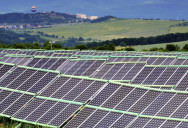Why The Success Of Renewable Energy May Be The Biggest Threat To Its Future

Renewable energy sources have come a long way over the past several decades and they now make up a significant portion of the overall energy supply.
This has helped to increase the supply of electricity into the grid, and dramatically reduce the cost.
When the demand for energy is low, and the supply from renewables is high, the cost of electricity has actually dropped to zero, or in a few rare cases, dropped to negative rates.
For the consumer, this is a great thing. It helps to cut the overall costs of energy, which is especially important during times when the cost of living in many parts of the world is rising significantly faster than wages.
The problem, however, is that when the money that can be charged for renewable energy drops this low, there is little incentive for companies to make major investments into this type of infrastructure.
Alex Thiemann, the CEO of Sonnedix, a solar developer, pointed this out when he said:
“Negative pricing is going to slow down the deployment of renewable capacity for most players. That affects your ability to invest at reasonable levels.”

Having this lack of investment will result in a stalling of the progress that has been made in this industry.
Even though having this source of energy is good for both consumers and the environment, there needs to be a motive for further investments to take place.
One of the most promising solutions to the ‘problem’ of having such success with renewables is improved energy storage.
Rather than having electricity providers lower prices when there is an overabundance of electricity, they can simply store the excess energy in batteries or other solutions.
This energy can then be used during times of peak demand, or when production from renewables has dropped significantly (such as at night or on calm days).

As the market adjusts to this reality of highly successful renewable options, it is likely that the investments may shift (at least temporarily) toward energy storage technologies.
If energy storage cannot keep up with demand, it could have a long-term negative impact on the future growth of renewable energy production as well.
Many global leaders are already looking at this issue and hoping to find a sustainable solution.
The success of renewable energy may be its biggest obstacle.
If you think that’s impressive, check out this story about a “goldmine” of lithium that was found in the U.S. that could completely change the EV battery game.

Sign up to get our BEST stories of the week straight to your inbox.




